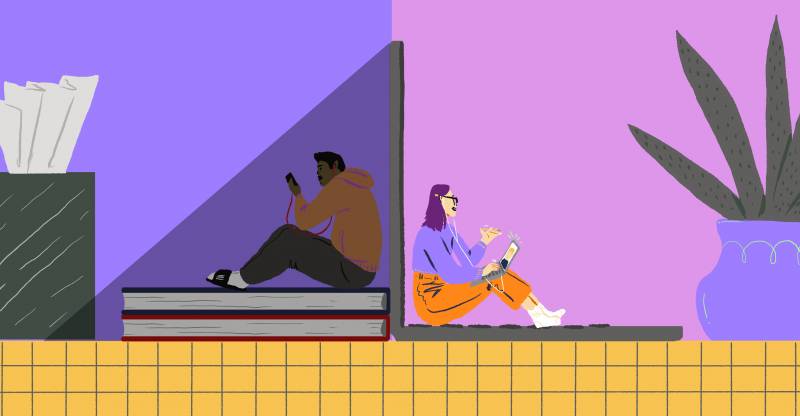Some colleges like Duke, Smith, MIT, Georgetown and Grinnell are starting to offer students the option of taking their Spring courses pass/fail given the circumstances.
In a time of virtual reality classrooms and AI-enabled automated tutoring programs, why are the experts in digital teaching calling for professors to simplify?
"Everyone's freaked out," says Sean Michael Morris. He's in the School of Education and Human Development at the University of Colorado, Denver and the director of Digital Pedagogy Lab, an organization focused on digital learning, technology and social justice.
Sean Michael Morris says that in this unprecedented time, "Recognizing that we're also human, we also have to figure this out together is incredibly important. The idea of being able to just port what you're doing in a classroom into an online environment has its own problems. But trying to do that in the midst of a pandemic is another problem altogether."
Morris and other colleagues have a tongue-in-cheek name for what they're doing right now: "Panic-gogy" (for panic + pedagogy).
On one level, Panicgogy means understanding students' practicalities. Some only have smartphones. Some have family responsibilities. Some have been sent home and need to find a new place to live, new job, and new health insurance. Professors may feel that the simplest option would be transitioning to class over video chat, but for all these practical reasons "It's not really realistic to think that students can just show up and start taking class at the same time every day in an online environment," says Morris.
Morris also suggests that professors not rely solely on the university's official software, known as a learning management system, but that they make themselves reachable by as many means as possible while preserving privacy: Facebook, Twitter, email, WhatsApp group. And make sure that students have the opportunity to be connected to each other as well.
He also suggests that professors make themselves as familiar as possible with all the types of help universities and communities are offering: from counseling, to emergency loans and other financial assistance.
Robin DeRosa is director of the Open Learning and Teaching Collaborative at Plymouth State University in New Hampshire. She says, "I think the first thing is we are not building online courses or converting your face to face courses to online learning. Really, what we're doing is we are trying to extend a sense of care to our students and trying to build a community that's going to be able to work together to get through the learning challenges that we have."
DeRosa points out that creating an excellent online course can take a year of development and collaboration among people with different skills.
"So if people think that in three to five days they're going to rejigger their course and build some super amazing online platform, that's probably unlikely to happen," she says.
DeRosa suggests that we ask students for their own suggestions on the best ways to keep in touch.
"The idea here is really to help our students feel included in the process of rethinking education for a challenging time."
DeRosa also suggests that professors bring COVID-19 into the curriculum.
"Whatever field you teach, I think it's worth asking how is that field affected by the public health crisis and what contributions could the field be making right now to help people in their communities."
Even though the focus can sometimes be on technology, tools, and logistics, Morris, from the University of Colorado, Denver, says that what is really required from professors at this time is compassion.
"The real skill that Panicgogy requires is sort of a critical compassion, if you will, the ability to look at the situation as it really is. Figure out what's going on, how you can operate within that, and how you can be compassionate in that as well."
Copyright 2020 NPR. To see more, visit https://www.npr.org.
9(MDAxOTAwOTE4MDEyMTkxMDAzNjczZDljZA004))



9(MDAxOTAwOTE4MDEyMTkxMDAzNjczZDljZA004))